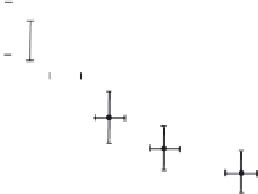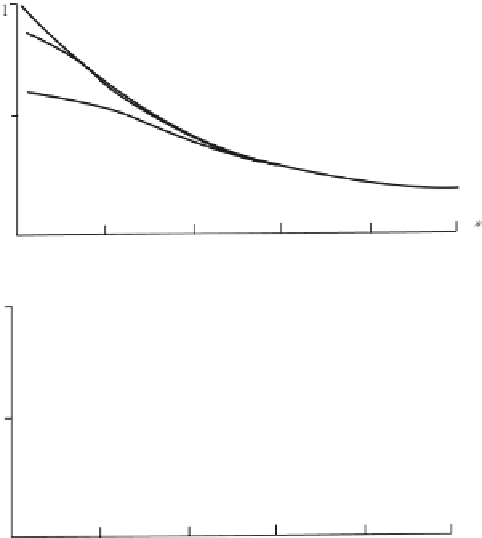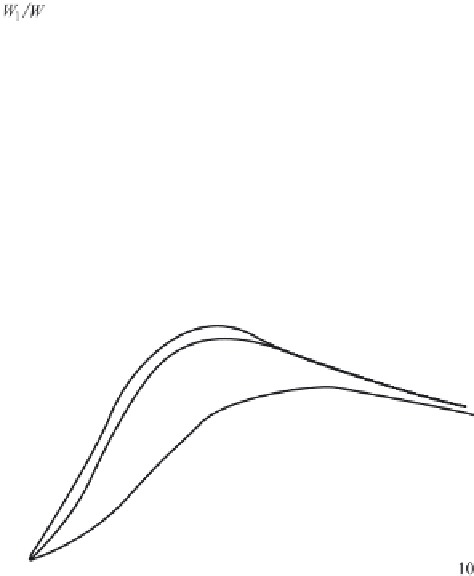Geoscience Reference
In-Depth Information
.
(a)
.
(b)
Fig. 2.14 Energy of wave, excited by piston-like (a) and membrane-like (b) displacements of
seabed, versus displacement duration. Curves 1 and 2 correspond to values of parameter
a
/
H
=
1
,
3. Curve 3 corresponds to linear theory of long waves (
a
/
H
1)
The results expounded above follow from the linear theory of long waves, which
actually describes the process of wave generation and propagation not quite ade-
quately. Figure 2.11 demonstrates waves formed by identical sources, but calculated
within the frameworks of two different linear theories: long-wave and potential. In
calculations we applied formulae (2.77), (2.65) and (2.66). Note that in the calcu-
lations presented in Fig. 2.11 use was made of quite an extended source, the length
of which amounted to ten ocean depths.
In the case of a membrane-like displacement the wave shape is essentially
different, especially at significant distances from the source. But in the case of
a piston-like displacement one can see a noticeable difference in the wave shape
and amplitude. In accordance with potential theory, the main perturbation is fol-
lowed by an oscillating 'tail', due to phase dispersion. A small enhancement of
the wave amplitude at large distances from the source (piston-like displacement) is
also explained by dispersion. Actually, as the distance from the source increases,
the wave amplitude first increases and only subsequently starts to decrease. The
physical interpretation of this phenomenon consists in the following: the sharp wave
front includes shortwave components travelling slower than the main wave, and,


































